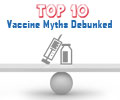University of Georgia researchers have provided vaccine developers with a novel method of developing designer vaccines that offer protection for several diseases
University of Georgia researchers have provided vaccine developers with a novel method of developing designer vaccines that offer protection for several diseases, even those that are presently difficult to prevent.
In a study published in the May 23 edition of the journal Proceedings of the National Academy of Sciences, Robert J. Woods and his colleagues demonstrate precisely how antibodies react differently to two common disease-causing bacteria – Group B Streptococcus and Streptococcus pneumoniae.Their 3D modeling technique gives researchers the power to effectively see how the body's antibodies bind to the chains of sugars on the outer coats of bacteria. In cases where antibodies don't bind to the sugars and no immune response is triggered, researchers could chemically alter the sugars so that body recognizes the bacteria as a threat and mounts a defense.
"What you'd really like is to control either the broadness of the immune response so that you can take one vaccine and protect against multiple strains of the bacteria," said Woods, lead author of the study and associate professor of biochemistry at the UGA Complex Carbohydrate Research Center. "Or you could take a strain that's not easy to vaccinate against and induce an immune response using a synthetically modified sugar."
Woods and his colleagues chose to examine Group B Streptococcus and Streptococcus pneumoniae because of their virulence and because they have very similar outer coats. Chemically, strains III and 14 of these two bacteria share a common molecular backbone. The only difference is a missing acidic sugar in the side chain of Streptococcus pneumoniae 14.
The immune system can generate antibodies against both bacteria but – despite the similarities in their surface sugars – antibodies against the one bacterium do not generally recognize the other and so do not protect against infection by the other.
To understand this lack of cross-immunity, Woods developed a computer simulation model that can predict how the atoms in the long-chain sugars interact with the body's antibodies. The model takes into account factors such as the various attractive forces between and among the sugar molecules, the attraction between the sugar molecules and the thousands of water molecules and ions that surround them and the motion and folding patterns of the sugar chains.
Advertisements
The surface sugars of Streptococcus pneumoniae 14, on the other hand, lack the extended corkscrew shape and so aren't recognized by antibodies against type III Group B Streptococcus. Instead, antibodies against Streptococcus pneumoniae 14 are forced to recognize a short sequence of surface sugars.
Advertisements
He and his team are now working with Neisseria meningitidis, the bacteria that causes meningitis. Neisseria has evolved some strains that have a coat that bears the same sugars that human cells do – the bacteriological equivalent of a wolf in sheep's clothing – so that the body is slow to mount a strong immune response. Once an accurate model of its sugar chains is created, those chains could potentially be altered in a way that allows the body to recognize it.
Of course, researchers could chemically alter the molecules on the coats of bacteria without the benefit of modeling, but they would be essentially shooting in the dark. "What we have the power to do now is to make predictions ahead of the experiment," Woods said, "To ask, what effect is this likely to have?"
Woods said the strength of his technique is its ability to be applied to various infectious diseases. The challenge is making immunologists and other scientists comfortable with computational modeling. To that end, he and his colleagues have established a Web site, http://glycam.ccrc.uga.edu that assists researchers who want to do their own structure prediction work.
"There's still some education to do to get people who design vaccines away from thinking about just using material from the bacteria to understanding the data at a more physical level," Woods said. "It could usher in a new way of thinking about vaccine development."
Source :Eureka Alert







